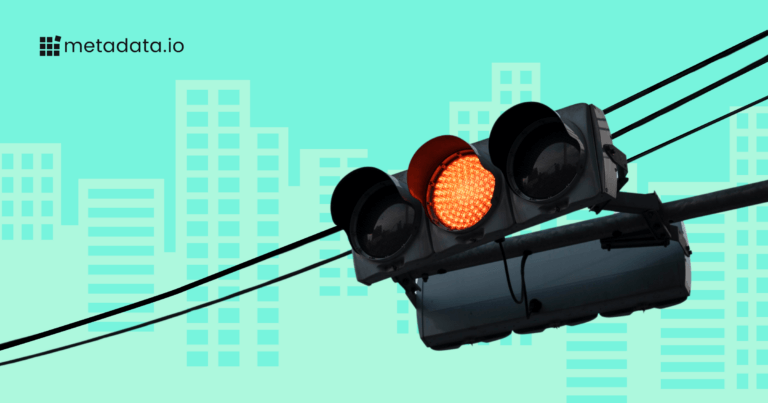How Navvatic Cut Its Sales Cycle By 59% in Less Than Two Years
Want to hear something crazy?
Navattic and ChiliPiper teamed up and requested demos from 100 leading SaaS companies.
Guess how long it took these companies, on average, to reply. We’ll wait…because they certainly did.
Two. Days.
Oh, it gets worse.
Over a third of them (35%) didn’t even respond.
That’s how Natalie Marcotullio, Head of Growth and Operations at Navattic, kicked off her DEMAND session.
In a world where we can get anything in less than 24 hours, how can it take two days for companies with potentially thousands of employees and millions in revenue to send a simple email or pick up the phone? Or, you know, set up an automated email to say yay or nay to the demo request.
The B2B buying experience is in complete shambles. B2B demand gen marketers, we gotta step it up. There’s a blue ocean of opportunity to improve the buying experience and set yourself apart from the competition.
Here’s how Natalie did that at Navattic and how you can, too.
1. Make it easy to talk to Sales
Looking for an absolute layup to improve the B2B buying experience?
Here’s one from Natalie: Get rid of any form fields you don’t need. If your Sales team says they don’t need the information, kick that field to the curb. (Even if they do say they need it, consider kicking it.)
Your buyers don’t want to fill out forms. It’s human nature, especially in today’s privacy-conscious world. In fact, Unbounce found that the median conversion to form-fill rates among their customers was only 3%. It makes sense why 81% of technology buyers choose not to fill out forms for gated content. Translation: If people won’t fill out forms for content, you can bet your bottom dollar that they won’t fill them out if it means talking to Sales next.
The moral of the story? Keep your forms short and sweet. Factors.ai found the sweet spot to be between four and six fields, but run some experiments and let your buyers tell you how much info they’re willing to give away.
Pro Tip: Use lead and data enrichment tools, which pull from external data sources, to fill in any gaps and help you get a complete picture of every lead—all without extra form fields.
2. Double down on prospect self-qualification with interactive demos
Want to one-up your competitors with short forms? Ungate everything on your website, including your product, via interactive demos that give prospects a hands-on walk-through experience.
Your buyers, especially ones from younger generations, don’t want to interact with people during their purchasing journey early on. In fact, according to Gartner, 75% of B2B buyers prefer a “rep-free sales experience.”
So, what do they prefer? Easy-to-access resources that allow them to decide if a product is a good fit for them. Interactive demos fit the bill. Natalie suggests putting them above the fold so that almost every website visitor sees them. If the interactive demo is solid, informative, and resonates with your buyers, they’ll naturally raise their hands and get in touch with Sales.
Pro Tip: Keep your interactive demos short and value-focused. Navvatic recommends keeping the first demo section to around 10-15 steps and letting your buyers choose which features to explore next.
3. Shift to transparent pricing (this is a big one)
Does pineapple belong on pizza?
Is it “car-a-mel” or “car-mel”?
People will disagree on just about anything, and for B2B marketers, public pricing is no exception.
In Natalie’s opinion, though, pricing should be front and center.
“Just this year, [Navvatic] launched a v1 of pricing on our website. This included actually showing the pricing and not hiding anything; no hidden upcharges. If you go to our website, [the price you see] is most likely the price you’ll pay.”

A screenshot of Navvatic’s pricing page.
Transparency is one of the most powerful levers you can pull right now.
Case in point: 60% of consumers said they believed that trustworthiness and transparency were the most important traits of a brand. That includes pricing and transactions, with 83% of B2B buyers saying that they prefer ordering or paying through digital commerce.
Public pricing is so much more than a green flag—it’s a full-blown competitive advantage that can help you close more deals. Natalie said, “Public pricing isn’t just a nice-to-have for your prospects; it can show early on that you’re a partner they can trust.”
Unfortunately, most B2B companies keep the dollar signs behind lock and key (or a button that says some flavor of “Talk to Sales”).
Why? Because they can’t get leadership buy-in.
If you’re nodding your head, you’re not alone—Natalie was in the same boat not too long ago. You can turn the tide in your favor, however, by taking the same three steps she did:
A. Gather external data
Support why you need transparent pricing on your website with outside sources. “When we’re making pitches to our leadership teams [as B2B marketers], it can often feel like just our thoughts or opinions.” She continued, “By gathering external data though, you can show that this isn’t just what you like or think—this is what industry experts say are best practices.”
Getting this data doesn’t have to take you down a long and winding road, either. Natalie got the data she needed by interviewing industry experts for this blog post: Buyer Experience Tips That Take Less Than a Day to Implement.
She asked these experts a simple question: How can companies improve the buying experience?
Unsurprisingly, many of their responses aligned with the changes she wanted to make to the buying experience at Navvatic.

B. Gather internal data
External data is great; internal data is even better.
In Natalie’s words, “Even if you’ve proven [public pricing] is an industry best practice, you have to prove this is actually what your prospects want.”
Again, you don’t have to get fancy to source this data. Natalie added a simple field on her demo form that said, “Please share anything that would help us prepare for our meeting.”
Shocker: Many of her prospects asked for pricing info. You’d be surprised by how many of your prospects are hopping on that first call just to learn about the cost.
So, not only will public pricing make your buyers smile, but it can potentially save your Sales team from spending time on a call with a prospect they’d immediately disqualify due to budget constraints.
C. Get Sales and Product buy-in
Natalie said this is the most important step. “Before you convince the rest of leadership to hop onboard for public pricing, you really need to make sure that Sales and Product are bought in.”
Because let’s be honest—the decision to put pricing on your website impacts their jobs a little bit more than yours. Your Sales team, for example, will likely see the effects of public pricing in the form of different annual contract values (ACV), win rates, and quotas. You know, the numbers they use to keep their jobs.
Here’s a tip from Natalie that’ll help you get your Sales team on board: Gather Gong clips of prospects hounding them for pricing.
On a previous podcast with Natalie, Ben Pearson, Head of Sales & GTM at Navattic, said, “The breaking point for me was imagining you worked at a company, and you had prospects telling you all day long they needed feature ABC, and you refused to build it. Natalie was hearing about public-facing pricing constantly. [The Sales team] heard it on every call. Our prospects were craving and dying for it, so eventually, it was a decision we made.”
And guess what? Public pricing works. Here’s a direct quote from a Navvatic customer.

Start small and experiment
Making any changes to the buying experience is scary, especially when it comes to pricing. Luckily, you don’t have to dive in all at once. Instead, Natalie suggests starting small and experimenting with changes along the buying journey.
“Experimentation can help get more people aligned and onboard and make it feel like they were part of the decision versus it being thrown on them.”
When it came to pricing, Natalie started small by asking Sales reps to email certain prospects pricing information (specifically the ones who asked for more pricing information in the demo form). From there, she measured the deals and compared their time-to-close with deals that didn’t have transparent pricing from the start.
Surprise, surprise: Deals closed faster when Sales reps were transparent about pricing.
What are other experiments you can run? Natalie shared a handful:
- Automate lead request routing
- Share interactive demos to target accounts
- Give website visitors a pricing range or an idea of your plans

Remember: The bar for B2B buying experiences right now is painfully low, so any moves you make in the right direction will make waves with your buyers. (The good kind!)
Then, as you run these experiments, zoom out and take note of how they’re impacting sales. Share those findings with your leadership team and continue securing buy-in for future changes in the best interest of the buying experience and your bottom line.
What other DEMAND sessions should you watch? All of them.



